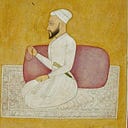I’ve received some questions regarding Punjabi genetics, so thought I’d share some of the data on this topic. As per usual, charts are constructed with Harappa Gedmatch scores.
Above is a PCA chart with selected Punjabi groups highlighted. I didn’t include every tribe as it would just look like an inscrutable mess of many colored dots, so I selected from both the larger and more interesting Punjabi groups. A few notes below:
- There is a tendency among Punjabis to ignore the lower-castes among them, or if they are acknowledged, imply that they aren’t, “real Punjabis”. Now while its true that Punjabi Dalits show signs of possibly being migrants from the Gangetic Plains, I still think they should be included in these analysis. The Dalit group is drawn from samples collected in Lahore, and as you can see, forms its own cluster. This is roughly where you would find mid to low-caste North-Indians and mid to upper-caste South-Indians.
- Punjabi Chamars form a kind of bridge between the Dalits and upper-caste Punjabis. This genetic position may be reflected socially, as Sara Singha notes that due to certain Punjabi Dalits converting to Christianity, the Chamars in West Punjab converted to Islam, as they didn’t want to be associated with the former. The Chamars are still however considered low-caste by the major Punjabi tribes. Their position on the chart is roughly equivalent to a North-Indian Kshatriya.
- The final grouping on the right is about where most Punjabis cluster. In fact, using the 1931 British-Punjab census as a baseline, about 2/3rds of Punjabis can be found in the space just towards the right of the Chamar cluster (upper-caste). This figure varies between religious groups though. Only about 55% of Hindu Punjabis are upper-caste, compared to 75% of Muslim Punjabis, and 85% of Sikh Punjabis. Sikhs are a bit skewed as nearly 66% of their population is entirely Jat, while no single tribe comprises more than 20% of the population among Hindus and Muslims.
- Among the upper-caste cluster above, a couple trends are apparent. First, in contrast to most of India, Brahmans are not the most Western-shifted caste of their ethnicity. In fact, there seem to be a number of Punjabi tribes that surpass them in this regard. Second, Indians Jats (particularly in Haryana) are getting pulled out of the main Punjabi cluster due to their large amount of European-Steppe admixture. Pakistani Jats aren’t pictured here, but tend to be more in line with the general Punjabi cline, and would be somewhere in the middle of the upper-caste cluster.
Above is a quick chart I put together for all the different Punjabi groups I had, since they wouldn’t fit on the PCA, or there weren’t enough samples. The order was based on geography; Pakistani-Punjabis towards starting on the left, Sikh and general Indian Punjabis in the middle, with Haryana and Himachal Punjabis at the end. A quick note on the legend below:
Ancestral Indian refers to the original Indian hunter gatherers who populated the Indian subcontinent. Ancient Iranian refers to the Iranian hunter gatherers who likely arrived later and mixed with the Ancestral Indians in the Indus Valley. European refers to the genetic signal from the Indo-Aryans, who were the next group to arrive in the region. West Asian signifies later admixture from West Asia and the Middle-East. East Asian is, well, East Asian, largely from Eastern-Steppe groups (Scythians, Turks, Mongols) with a bit from Tibet.
There’s more to say on this topic but I don’t like inundating readers with too many words, so I’ll break for now. Feel free to shoot me any questions or comments.
